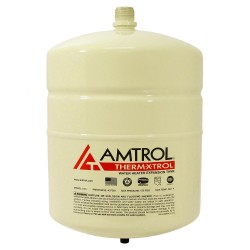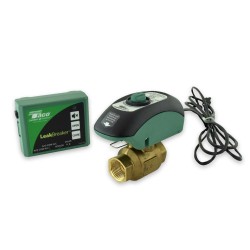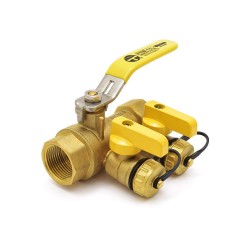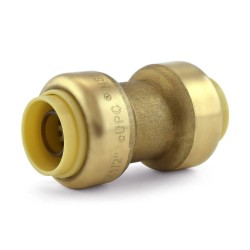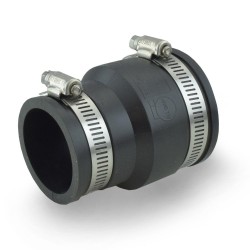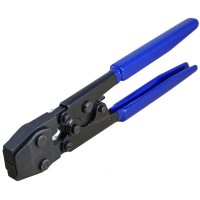There will always be an ongoing debate between the two most popular polymers in the plumbing industry. They have both been used for numerous decades, and plumbers will always prefer one over the other. One of these polymers is cross-linked polyethylene or more commonly known as PEX Tubing. The other is chlorinated polyvinyl chloride, or commonly referred to as CPVC. Each tubing has its ups and downs, and is chosen for certain areas for application. Most plumbers have a certain preference when it comes to choosing a type of tubing, and today more plumbers are reverting to PEX.
PEX tubing is the obvious choice when deciding between the two types of pipe. CPVC has been held accountable for many problems in common residential plumbing systems. CPVC’s incapability to withstand many of the trials that PEX tubing goes through has made PEX the giant of the two by a landslide. PEX is more sturdy, reliable, resistant, and nearly the same price, depending on the manufacturer of CPVC. Thus, CPVC has become a sub-par choice for anyone building or replacing their current plumbing setup.
These pipes have a lot of common similarities between the two. They are both legal in all fifty states for potable cold and hot water applications. While PEX also meets the standards in Canada, as well as all the necessary codes for hydronic radiant heating systems. Both pipes do not corrode, are scale resistant, chlorine resistant, and have identical pressure and temperature ratings. They are both plastic pipes that at one point took the industry by storm, but with time there is evolution, and PEX has become what CPVC can never be.
PEX has taken over the market share between the two holding more that 60 percent, as CPVC hold less than a mere 15 percent. It’s not hard to understand why, considering the one-on-one battle between the two is never a place CPVC wants to be. PEX tubing has a lightweight body, same as CPVC, but its intricate design has entitled the user to be able to bend and push the tubing through holes and other areas where no pipe can go without a few fittings. This means that with the usage of PEX the number of fitting necessary to make a connection is substantially reduced. When compared to the amount of fitting used, plumbing systems needed to be connected with 40 percent more fittings used when connecting CPVC. PEX is always going to be the easier option to install due to its universal tools, and simple mechanics of the crimp and clamp style connections, as opposed to cementing CPVC.
The big win for PEX here is its freeze resistance. Where CPVC will dry out and burst, or minimally lose grip on its cement connections, PEX tubing expands and retracts with ease. Due to it being able to take the cold temperature without freezing or bursting, it is eligible for use in applications for snow and ice melting. The cherry on top for customers browsing the market is always going to be price. When comparing the prices of two items, usually the parameters and specifications are examined. Even after being un-equivalent to PEX, most CPVC distributors charge up to 40 percent more on average then the regular price of PEX.
Overall it is not hard to decide which one of the two types is superior. One is a state of the art intricately designed tubing designed to withstand freezing cold and burning hot temperatures; while CPVC can only do one. PEX tubing can withstand the process of bending and turning to fit through closed areas without fitting, while the other one cannot. The price of PEX is still 40 percent lower than that of CPVC, while being in control of around 60 percent of the market share of the plumbing industry. PEX seems to only grow stronger in the market, and more used as time goes on, as CPVC is slowly fading away. Making the choice of PEX vs. CPVC an easy one, that no one should have to go through.
PEX tubing Vs CPVC tubing comparison chart:
Features | PEX | CPVC |
Lifetime Expectancy | 50-100 Years | 50-75 Years |
Average Rate Per 100 Ft. | $28 | $46 |
Applicable for radiant heating systems | Yes | No |
Applicable to hot and cold potable water systems | Yes | Yes |
Lightweight and Crush resistant | Yes | Yes |
Up to 40% less fittings than copper | Yes | No |
Can Withstand UV (Ultra Violet) rays | No | No |
Freeze-burst resistance | Yes | No |
Resistant to corrosion, chlorine, scaling, and pinholes | Yes | Yes |
Temperature/Pressure Ratings 180@100psi | Yes | Yes |
Legal In All 50 States And Canada | Yes | No |
Average time of installation one point | Less 2 min | Up to 2 hours |
Flexible for bending purposes | Yes | No |
Connections is visual | Yes | No |
Installation requires welding or chemicals | No | Yes |
Related articles:
PEX vs Copper - Comparing plumbing pipes
PEX vs PB - Comparing plumbing pipes

